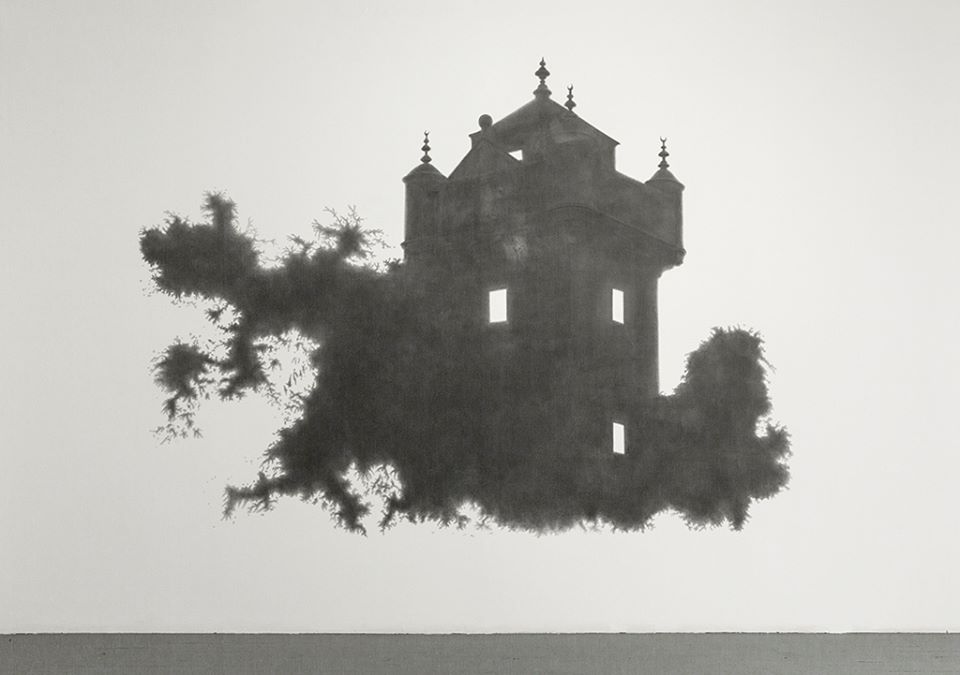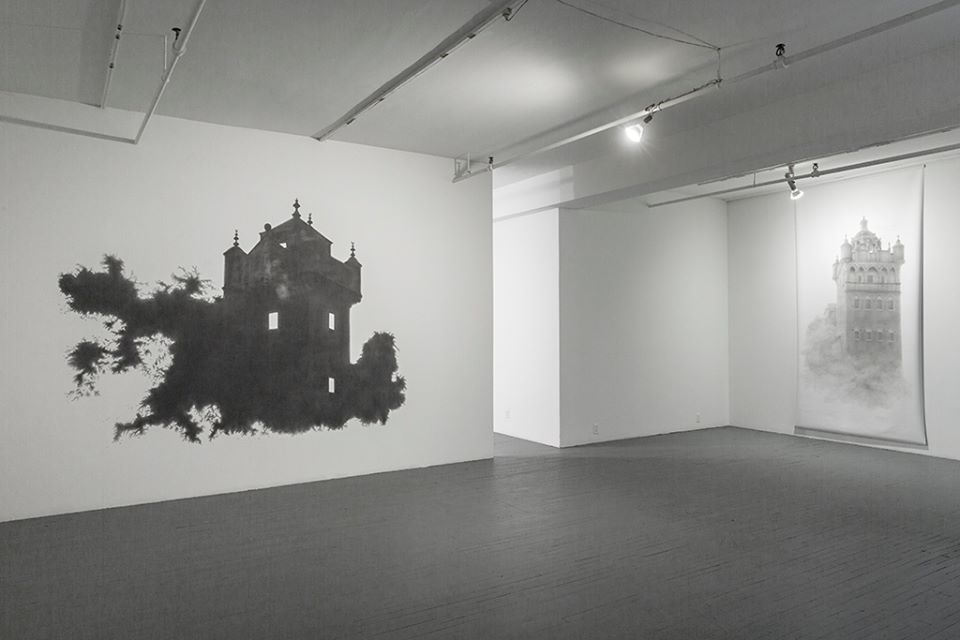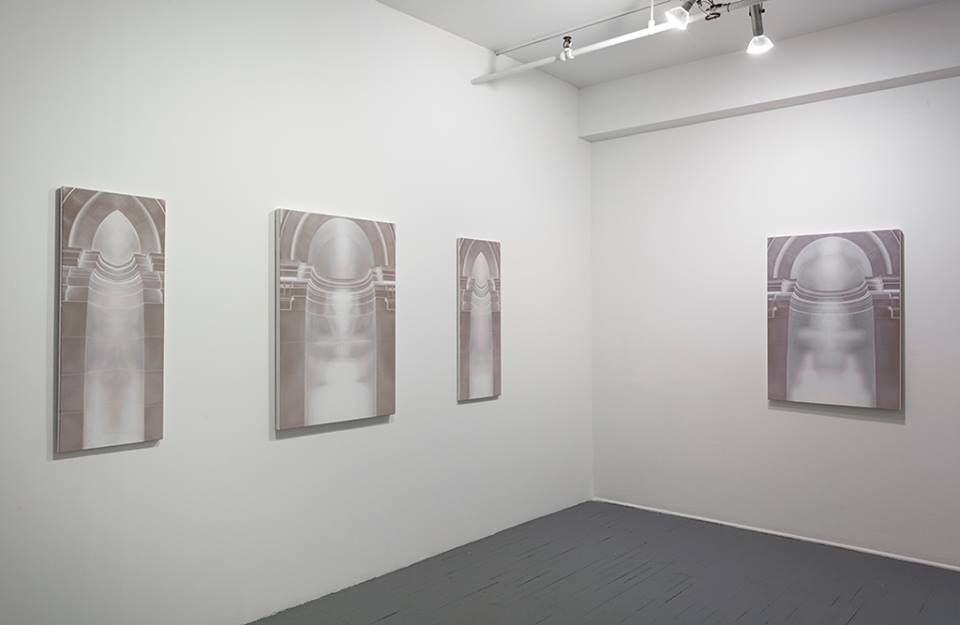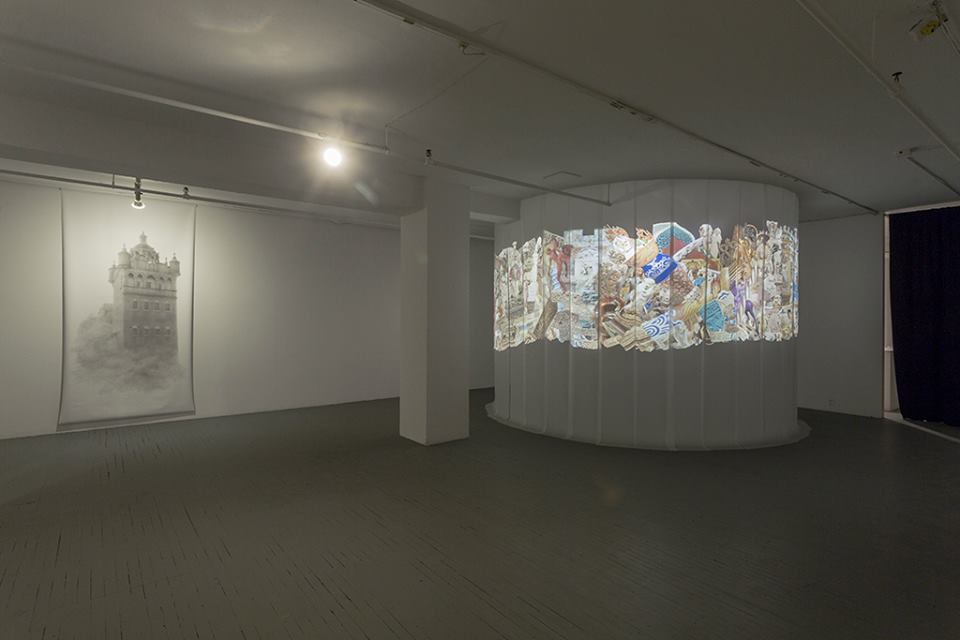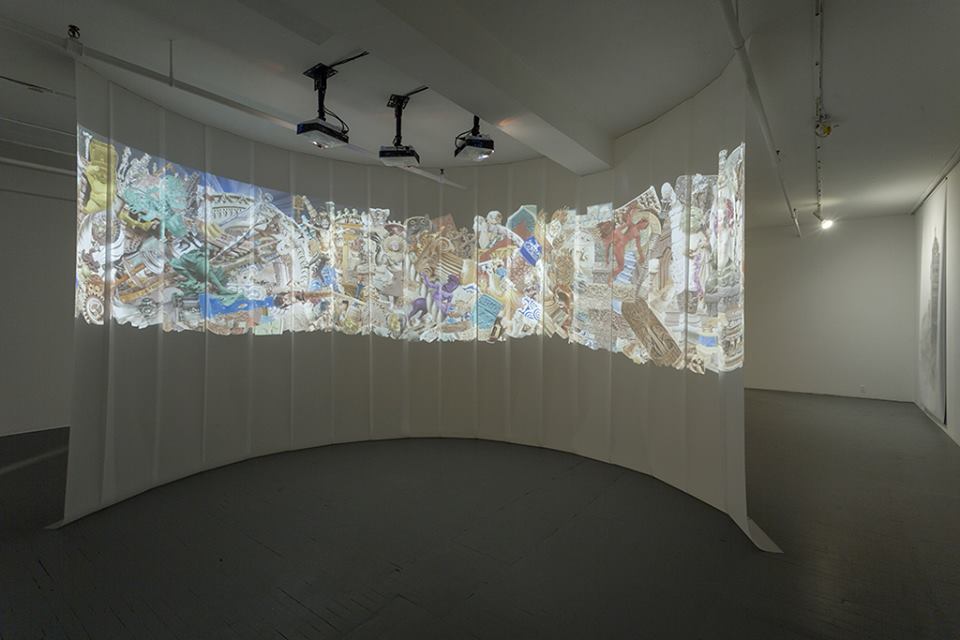MATILDA ASLIZADEH AND GWENESSA LAM: EDGE STATE
Video Installation, Drawings
September 5 – October 4, 2014
Project Description
When a line becomes a wall and a circle becomes a fortress
What is the shape of an edge?
In architectural drawing, a line demarcates a space that can separate or enclose a body. A simple boundary line can guide or constrict the movement of entire communities. However, within every wall there are cracks, fissures, and trespasses. The works of Matilda Aslizadeh and Gwenessa Lam inhabit such boundary spaces as “edge states.” Their images question the resiliency of defensive structures, as they exist between the spectrum of triumph and ruin, deterioration and transformation. Walls and towers have historically marked the borders of a nation’s territory and sovereignty. Aslizadeh and Lam revisit such barriers as mutable spaces.
The exhibition is composed of a video installation by Matilda Aslizadeh, and paintings and drawings by Gwenessa Lam.
Matilda Aslizadeh
Aslizadeh’s video installation features a circular screen that depicts a slowly moving wall constituted by fragments of material culture. Drawing from the totality of human history, the spoils of a sacked museum are repurposed to construct a threshold between inclusion and exclusion. Equal parts national border, barricade, ruin, and spectacle, the piece asserts a relationship between defense, historical culture and entertainment. Its slow rotation invites viewers to contemplate the space, time, and function of this imagined demarcation.
Gwenessa Lam
Lam’s large-scale drawings and paintings depict free-floating towers, based on the architecture of the Kaiping Diaolou. The diaolou are late 19th century multi-storey homes located in Kaiping county, Guangdong, China. Constructed like a fortress or watchtower, these defensive buildings were designed to protect against theft and banditry. Listed on the UNESCO’s World Heritage List, the diaolou are significant for their distinct fusion of architectural styles, exemplifying the impact of emigration in regions such as South Asia, Australasia, and North America. Inspired by the architecture of the diaolou, the drawings depict silhouettes or faded renderings of the buildings. Their hybridized forms attempt to ‘decapitate’ the model of these towers, to reconfigure their efficacy as vessels of power or escape.

